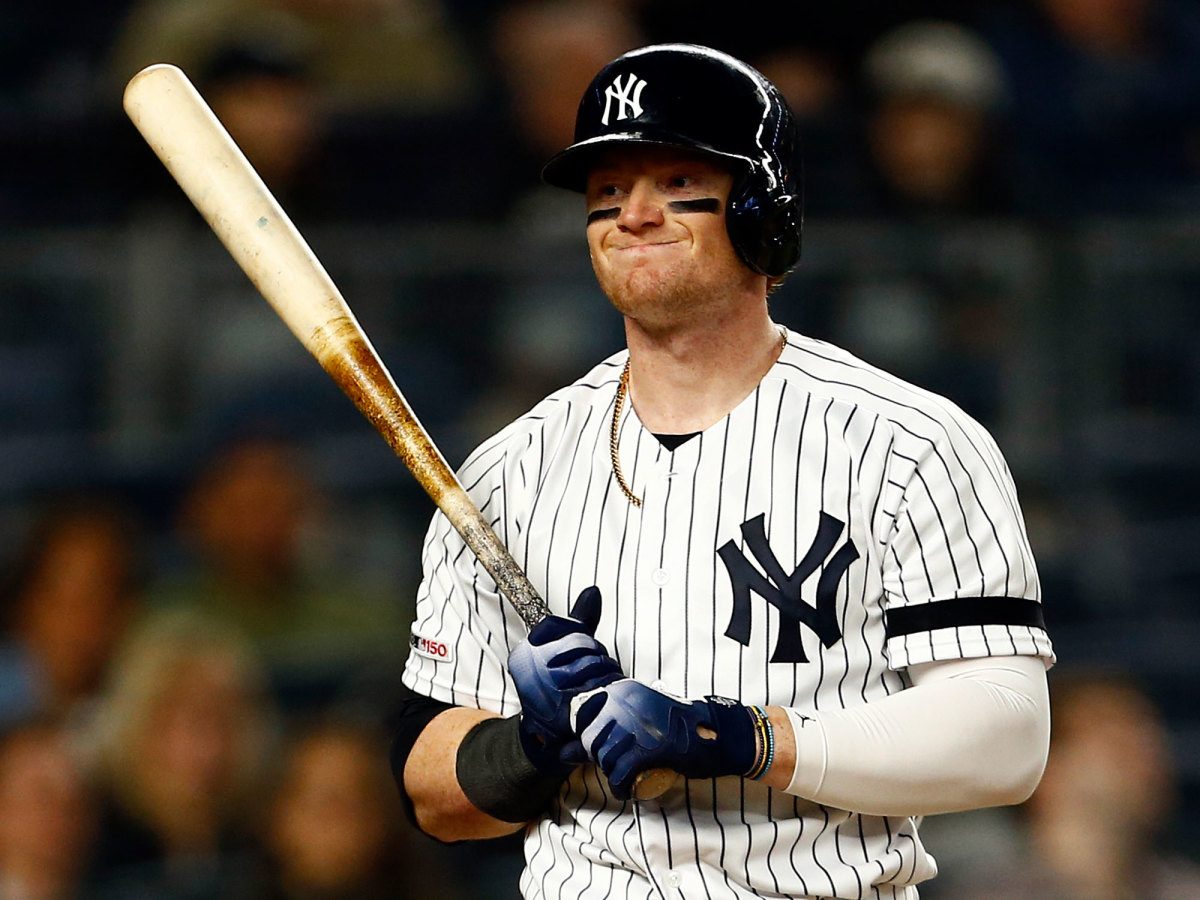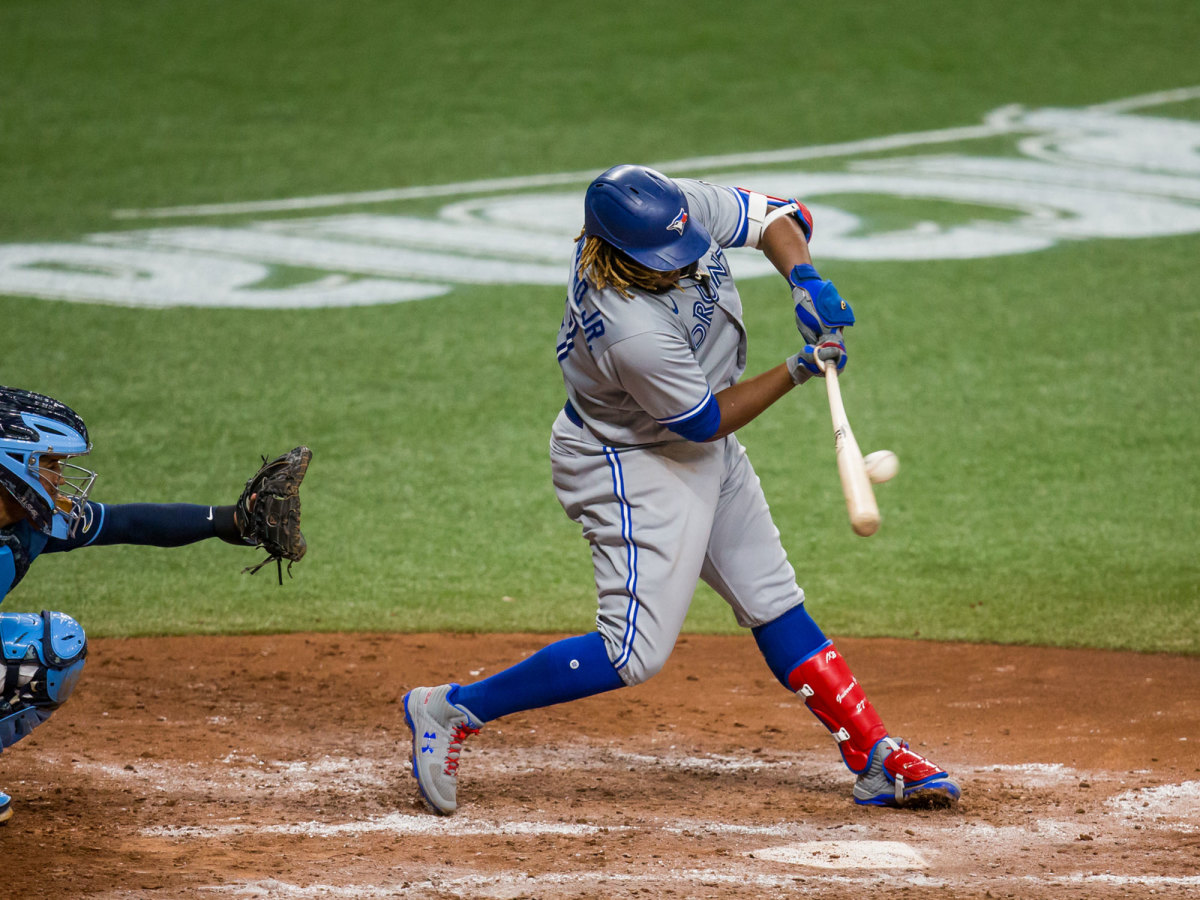Three Hitters Poised for a Breakout Season
At this time last year, Fernando Tatis Jr. was a second-generation big leaguer with exceptional yet unrefined talent. Randy Arozarena was a random young outfielder the Rays had recently acquired from the Cardinals. Mike Yastrzemski was Carl’s grandson.
Since then, Tatis became the most exciting player in baseball; Arozarena put together perhaps the greatest individual postseason-hitting performance ever; Yastrzemski had the second-most WAR among outfielders, behind only Mookie Betts.
A lot can happen in a year's time. As spring training gets underway, let’s take a look at the position players who could be this season’s Tatis, Arozarena and Yastrzemski.
Clint Frazier, OF, New York Yankees
After years of waiting, Clint Frazier is finally going to be the Yankees’ starting left fielder, with Aaron Boone saying last week that Frazier “has earned his place.” No longer fighting for a roster spot or regular playing time, this is the season that Frazier shows why he’s long been such an exciting prospect.
Blessed with incredible bat speed Frazier made his debut midway through the 2017 season as one of the Baby Bombers, expected to be a member of the next great core of young Yankees players. But, he never stuck around in the big leagues long enough to earn consistent playing time. He was behind Aaron Judge, Aaron Hicks, Brett Gardner and Giancarlo Stanton, among others, on the depth chart, and saw most of his at bats when those players got hurt. Frazier also dealt with injuries over his first few seasons, including a concussion that robbed him of most of the 2018 season. The symptoms, he admitted last September, continued through the 2019 season, but he didn’t say anything because he wanted to keep playing.
His skills at the plate were never in question, but he was a defensive liability in ’19—with the worst of it coming when he made three blunders late in a Sunday night game against the Red Sox that ended up costing the Yankees the game—and was sent down to the minors to work on his glove. The lingering concussion symptoms contributed to, if not outright caused, his defensive woes, as issues with depth perception and light sensitivity hinder an outfielder’s ability to track a fly ball. He grew frustrated and openly voiced his displeasure in getting sent down, leading to concerns about his attitude. He was the subject of trade rumors, and there were questions about whether he needed a fresh start with another team.

Then came the 2020 season and a new Frazier. He was comfortable, more at ease with his circumstances. He kept playing, even when Judge and Stanton returned from the injuries that limited them to a combined 51 games. His bat was better than ever—his 149 wRC+ ranked third among all Yankees players, behind MVP candidates D.J. LeMahieu (176) and Luke Voit (152)—and his glove improved so much that he was a Gold Glove Award finalist.
• Read more about the Yankees' 2021 outlook in SI's Fantasy Preview
Of course Frazier’s strong campaign came in the pandemic-shortened season, and he played in just 39 of the 60 games after beginning the year at the team’s alternate site. Before truly silencing the skeptics, he’ll need to prove what he can do over a full season as an everyday player. But, in digging deeper, it’s clear Frazier’s 2020 performance is sustainable. He drastically increased his hard-hit rate (43.2%) and walk rate (15.6%).
A shift in mechanics can explain these improvements. When he first came up, in 2017, Frazier had a high leg kick, which he used as a timing mechanism. As he’d begin his load, he’d lift his front leg and balance on his back leg until it was time to swing. Doing this effectively requires impeccable balance, but the payoff is worth it, so long as the batter can do it consistently. That was clear from the walk-off, three-run homer Frazier hit against the Brewers in his sixth big-league game.
You can see Frazier pick up his leg to just below knee height and hover there before transferring his weight through the center-cut fastball at the point of contact. He told me he calls this approach “dancing with the pitcher,” and it worked wonders so long as the choreography was sound. But because of all the moving parts in this intricate tango, his load wasn’t always in sync with his partner. At lower levels his talent could overcome any slight flaw that disrupted timing. It didn’t work that way in the majors. As concussion symptoms derailed much of his next two seasons, his primary focus was survival—staying on the field and remaining in the big leagues—instead of correcting his noisy plate mechanics, which curbed his development.
His quieter load works something like this: He stiffens his front leg with his toe lightly touching the dirt, storing his weight mostly in his backside. As the pitcher motions home, he rocks his front leg back, simplifying his movements but still dancing, and when it’s time to swing, he re-places his foot and transfers his weight at the point of contact, conducting the stored energy from body to batted ball.
Now, the time is right for Frazier, with better plate mechanics, an improved glove and a starting role, to earn his place among the game’s most dynamic players.
Dylan Carlson, OF, St. Louis Cardinals
The Cardinals traded for Nolan Arenado this offseason, and they re-signed both Yadier Molina and Adam Wainwright. They have All-Star first baseman Paul Goldschmidt and ace righthander Jack Flaherty. And yet their success in 2021 hinges on the performance of Dylan Carlson, a 22-year-old outfielder with 119 career plate appearances in 35 games.
Sound unreasonable? Perhaps. But the Cardinals are right to expect major contributions from Carlson, their most promising young position player since the late Oscar Taveras.
Carlson was called up from the alternate site in mid-August and hurled into one of the worst situations imaginable for a top prospect to make his MLB debut. St. Louis was playing its first games in 16 days and its roster was in flux due to the team’s COVID-19 outbreak in late July, setting up a final stretch of 53 games crammed into 44 days, with nine of them consisting of seven-inning doubleheaders. Carlson was in the lineup for both games of his team’s return twin bill, batting sixth, and went 1-for-6 that day.
• Read more about the Cardinals' 2021 outlook in SI's Fantasy Preview
Over his first 17 days in the majors he played 21 games and struggled, getting optioned back to the alternate site on Sept. 5. At the time he was hitting .162 with a .458 OPS. He returned two weeks later and slashed .278/.325/.611 over his final 12 regular-season games. This was the player the Cardinals had been expecting all along, and it’s the player they’re relying on in 2021.
The biggest change for Carlson after he returned to the majors was his plate discipline. During his first stint he chased 28.1% of pitches outside the strike zone while swinging at 54.7% of pitches in the zone, according to Statcast. From when he was called back up through the end of the regular season, he chased fewer pitches (18.1%) and swung at more strikes (66.3%).
It’d be foolish to draw vast conclusions one way or the other based on what Carlson did last season in a sample of 35 regular-season games. But, his improved plate discipline is encouraging, as is how he ended the season.
A switch-hitter with all five tools, Carlson has the talent to be a star. If his improved plate discipline and strong finish are any indication of how quickly he can make adjustments, he’ll be one of the breakout stars of the 2021 season.

Vladimir Guerrero Jr., 1B/3B, Toronto Blue Jays
Long have we heard about the coming of Vladito.
Baseball’s No. 1 prospect two years ago, Vladimir Guerrero Jr. has not yet lived up to the hype—minus the show he put on in the 2019 Home Run Derby before losing in the finals to Pete Alonso. But, I assure you, this is the year he puts it all together.
First off, let’s acknowledge all that Guerrero has done over his first two seasons. He’s hit .269/.336/.442 with 24 home runs in 183 games—impressive numbers for most players before their 22nd birthday. But he’s not supposed to be most players. He was born to be a star.
One of the top nontransaction stories of this winter was that Vladdy Jr. is in the best shape of his life. Guerrero had dropped 40 pounds by the end of November, and those who had seen him in person raved about his progress. That he played as well as he did in 2020, despite reporting to summer camp after the COVID-19 shutdown at 280 pounds, which is indicative of his talent. He had a 115 OPS+ and played in all 60 of Toronto’s games.
• Read more about the Blue Jays' 2021 outlook in SI's Fantasy Preview
But because his weight gain hindered his mobility, the Blue Jays moved him from third base to first. He took the demotion to heart and worked to cut his weight without sapping his power, with the intention of earning back his third base job. Regardless of where he plays, though, a more fit Vladdy is going to be a far more productive player.
Beyond his body composition, Guerrero’s peripherals suggest his breakout season is imminent, so long as he makes a few adjustments. Last year he ranked in the 93rd percentile in hard-hit percentage and average exit velocity, according to Statcast. The problem was his 4.6-degree launch angle, well below the MLB average (11.9 degrees). So, even though he was hitting the ball insanely hard, more than half of his balls in play were hit on the ground. Grounders are more likely to be turned into outs, especially when the batter is not fast. If Guerrero lifts the ball more, he’ll be one of the best hitters in baseball.
